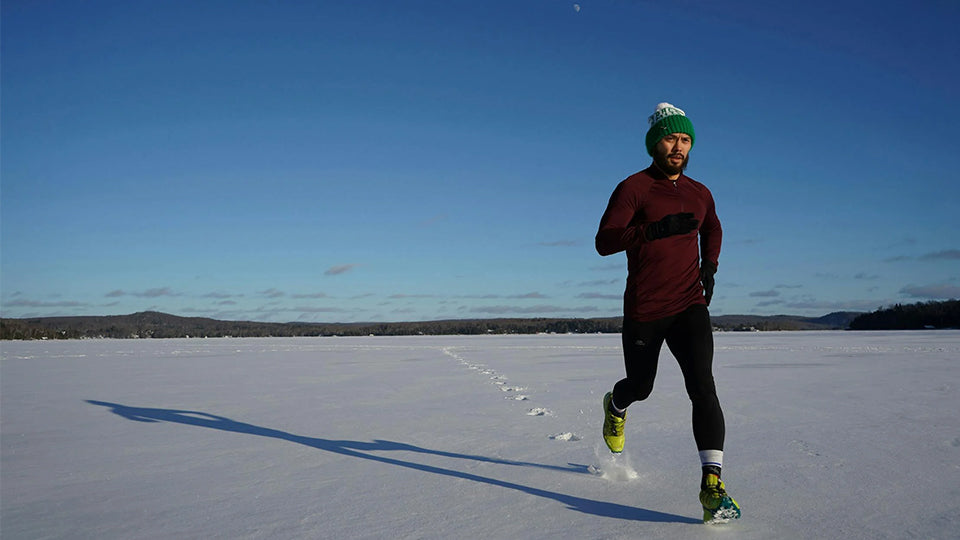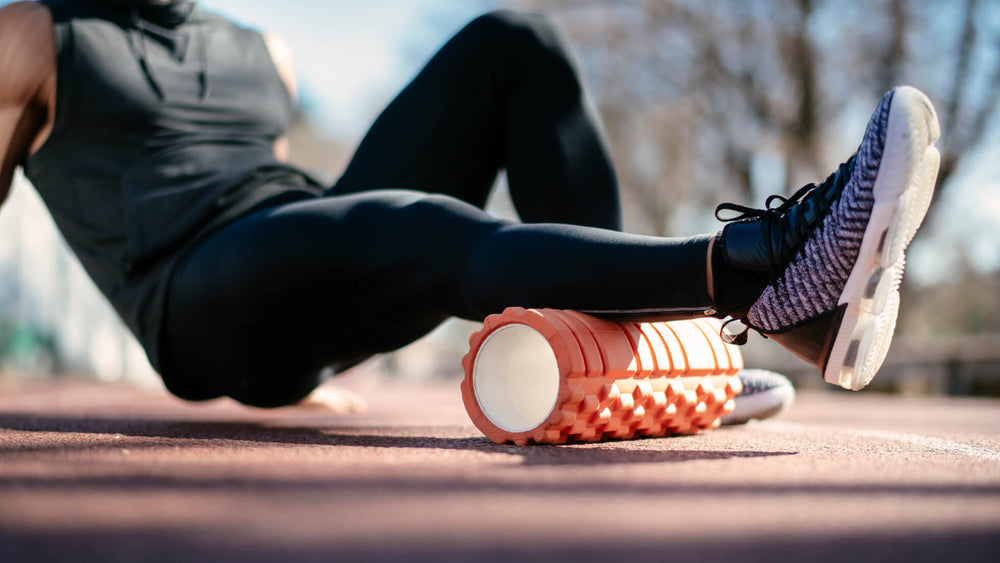Why You Should Add a Winter Ultra to Your Race Calendar

As temperatures drop and slow accumulates on your favorite trails, many athletes retreat to the warmth of their gym or hibernate for a few months of rest. If that’s not your jam, or if you tend to be hit hard by the doldrums of winter, consider embracing the chill by adding a winter ultra to your race calendar (and a couple more layers of clothes to your workout wardrobe).
These unique events offer a range of movement options for all types of athletes from ultrarunners to fat bikers, to skiers, and a variety of long distances that cater to everyone from relative beginners to Jack Frost himself. So rather than withdrawing until spring, consider tackling something new this winter to jumpstart your training and create unforgettable memories.
Pick Your Movement
Winter ultras come in various forms, allowing you to choose an activity that you already excel at, or switch it up from your usual mode of transportation to get some solid cross-training in during the “off season.” Here are the most common disciplines that you can compete in:
Cross-Country Skiing
Inarguably one of the best full-body workouts you can do and a great low-impact, highly aerobic sport, cross-country skiing is a popular option for winter ultra competitors. Depending on the type of race and terrain, you may have the ability to choose between classic and skate style skiing. While skate is generally faster and the choice of many who compete in popular races like the Birkenbiener, classic is more popular for rugged and remote winter ultras since it’s generally easier to tow your equipment in a sled behind you. Depending on your experience level and goals, you’ll want to either use waxless skis (less stopping, but less efficient), or brush up on your wax skills and pay close attention to temperature swings.
Snowshoeing
This is a discipline that generally overlaps with fat bike races thanks to the positive impact on singletrack trails. Snowshoeing applies firm, yet spread-out pressure to snowy singletrack, making it more rideable for fat bikers. This is a fun, low-cost way to participate in winter ultras and can be enjoyed by anyone regardless of experience since it doesn’t require a high level of skill to do. This is a great choice for those newer to winter sports.
Running
With the right gear, and the right snow conditions, running in the winter is one of the best ways to get outside while staying warm. As far as equipment goes, depending on what kind of terrain you’ll be tackling, you may want to consider trail running shoes, or winter-specific running shoes with additional insulation and built-in spikes. If you want to stick to your usual running shoes, you can “winterize” them by going a half-size up so that you can wear thicker socks, adding gaiters to keep the snow out, and add microspikes for additional traction on slick spots.
Fat Biking
Similarly to skiing, fat biking is a great way to get highly aerobic, low impact cross training in during the off season. Depending on your budget and the types of ultra races you want to do, you’ll need to decide between steel, aluminum, or carbon frames, what kinds of bags to use for equipment, and whether you want to use regular winter apparel, or fat bike-specific apparel. If the terrain is icy, you can also invest in studded tires to stay tire side down.
Pick Your Distance
Winter ultras offer a vast range of distances to suit every level of experience and ambition. You can choose anything from a local 50k to the grueling 1,000-mile Iditarod race, where you’ll find yourself navigating Alaska beneath the northern lights, often accompanied by full teams of sled dogs. When selecting a winter ultra distance, take into consideration race lengths you’ve completed in warmer months, your experience with all the logistics that come with racing a winter ultra (avoiding frostbite, keeping water warm, sleeping in a bivvy, doing bike maintenance in the cold, etc), and what your winter ambitions are. If you have big races in the spring for example, you may want to go a little easier on yourself in the winter.
Top Five Reasons You Should Race a Winter Ultra
1. Beat the Crowds
If you’re over the chaos of summer races, winter is your best chance to get a break. Since most “fair weather” runners, cyclists, and hikers head indoors during the winter, many popular hiking and biking areas offer rare solitude and a chance to enjoy the peace of nature. On top of that, winter ultras tend to attract fewer athletes, leading to a very close-knit community should you want training partners, or someone to get advice or gear from.
2. Breathtaking Destinations
Winter ultras take place in scenic areas featuring frozen lakes, snow-capped mountains, evergreen trees, and sometimes northern lights depending on where you’re racing (and have some luck!). From the start to the finish line, if you want guaranteed scenery, a winter ultra is the way to go.
Bonus Tip: Racing in the mountains? Prepare your body for top performance with Altitude Boost.
3. Added Challenge
How do you keep water from freezing over several hours? What’s the best way to change a flat tire without getting frostbite on your fingers? How should you pack a sled for optimal efficiency? Will a frozen Snickers Bar break your teeth? What’s the best fueling strategy? How many base layers do you need? You’ll need to be able to answer all of these questions and more going into your first winter ultra. These races require different skills and strategies compared to races you’d complete in warmer months. If a regular ultra is starting to feel too easy, freezing temperatures, snow, and cold, whipping winds can certainly up the “type two fun,” factor.
4. Gear Junkies Rejoice
If you love gear, a winter ultra is the perfect opportunity to indulge in your passion. From esbit stoves to fat bike-specific boots, to insulated hydration bladders, there’s no shortage of exciting gear to check out. And for many endurance athletes including distance runners, fat bikers, and cross-country skiers, the research and comparison is half the fun! Testing out different wool layers, hiking poles, sled builds, skin protection methods, bivvy setups and more is another great way to spend the winter months.
5. Beat Cabin Fever
With the arrival of winter, many people feel cooped up and restless indoors. There’s only so much Netflix you can watch! A winter ultra provides the perfect antidote to this issue. Engaging in a winter event gives you a reason to get outside, breathe in the fresh, crisp air, and enjoy the beauty of nature. The physical activity combined with some much-needed vitamin D exposure can boost your mood and overall well-being. Plus, the camaraderie of fellow participants can help combat feelings of isolation.
Bundle Up
Adding a winter ultra to your race calendar is not just about testing your limits; it’s an opportunity to embrace the beauty of winter and the unique challenges it presents. Whether you choose to cross-country ski, snowshoe, run, or fat bike, there’s a winter ultra waiting for you.
So, as the snow begins to fall and the temperatures drop, grab a warm drink and consider stepping outside your comfort zone!
Take the next step in your training regimen: Try any BRL Sports supplement risk-free! If our natural nutritional products aren’t the best you’ve ever used, simply return your purchase for a 100% refund — no questions asked!
Also in Inspiration & Perspiration

EPO: The Natural Advantage for Long-Distance Runners
Boost endurance naturally—learn how your body’s own EPO powers oxygen delivery, stamina, and recovery for long-distance runs.

Beating the Winter Blues: Find Your Training Motivation
Beat the winter slump—discover smart, energizing ways to stay motivated, strong, and consistent through cold-weather training.

Your Essential Winter Marathon Training Guide
Conquer cold-weather miles—learn how to layer, fuel, and stay safe while training for your winter or early spring marathon.


